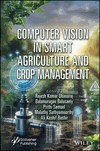Drone Application and Use Cases in Smart Agriculture and Crop Surveillance
Future Research Directions
Summary
Drones (small unmanned aerial vehicles) present a variety of opportunities for the agricultural industry; common drone uses include pesticide application, soil sampling and fertilization, farm animal observation, real-time aerial imaging, and sensor data collecting. Drones are being extensively promoted for use in agricultural spraying by the Indian federal government. These “Kisan drones” are primarily designed to reduce time, improve resource usage in agricultural sprays (pesticides, etc.), and lessen the negative health impacts of manual pesticide spraying. In the future, airborne imaging, surveying, and transportation are all anticipated to benefit from the use of drones in agriculture. According to this analysis, the government is actively pursuing a liberalized strategy to encourage drones and provide institutions, individual farmers, and businesspeople with significant financial incentives to buy and utilize or manufacture drones. Drones reportedly use resources more effectively and save a significant amount of water. They also save time. In comparison to manual labor costs, the unit economics of drone spray cost per acre is coming up. For young people in rural areas, drone flying for agricultural purposes can be a good option. If farmers start to trust drones for spray-related tasks, there is a strong chance their use will be expanded to other cutting-edge use cases as well, which will be beneficial for Indian agriculture.



